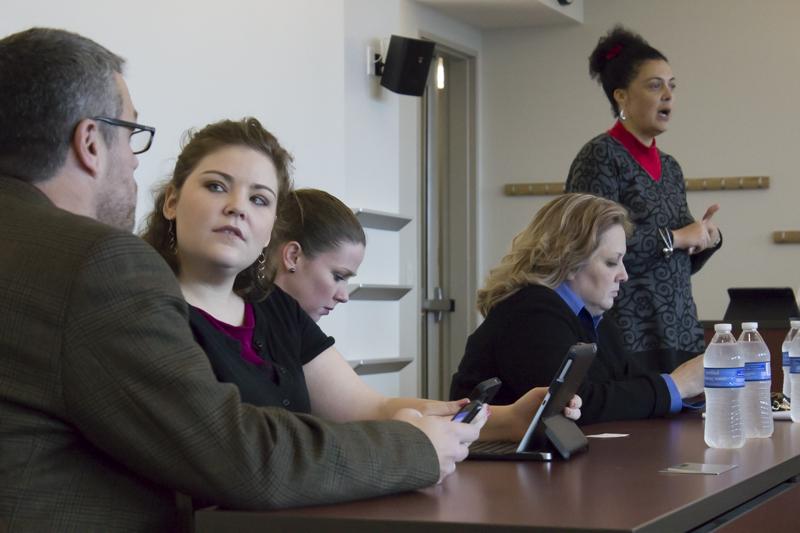Five lessons from SPJ’s “The News Goes Social” lunch
The news media’s increasing emphasis on social media has led to new approaches to storytelling, new opportunities for conversation and new emphasis on personal brands.
Those were some of the themes that five Greater Cincinnati professionals living in the changing world of digital media offered to more than 40 students and faculty Wednesday, Nov. 6 at Northern Kentucky University. The program, called “The News Goes Social,” was sponsored by the Cincinnati Pro and NKU chapters of the Society of Professional Journalists. Here are my top five takeaways.
1. Journalists are not alone
Some organizations are underusing the digital platform, according to Kevin Dugan, director of marketing at Empower Media Marketing.
“More than just journalists are talking about stories now,” said Dugan.
He believes that the function of journalists being gatekeepers may be disrupted for good.
“News conversations are happening with or without us,” said Kate McGinty, social media, engagement and news marketing editor at The Cincinnati Enquirer. Now it’s more about what stories to tell and how to tell them.
2. Credibility counts more than speed
“Is TMZ going to be the AP of the future, hell no,” Dugan said. “Credibility over speed every time.”
Dugan suggests that you publish a fact that you’ve already confirmed from your story to social media to let people know you’re working on something, but don’t rush your story.
3. Create a personal brand
“Start yesterday,” Krista Neher, CEO of Boot Camp Digital, said on the topic of when to begin building your personal brand on social media.
Neher suggested that a blog is a great way start your personal brand. In general she says branding with your name is best because your job may change but “chances are you’ll have your name for a long time.”
Your brand is going to follow you, so it’s something you have to own and control, explained Neher.
“Creating your brand is almost a job in itself now,” said Holly Edgell, community editor for WCPO-Digital.
The content creator is becoming just as important as the content. Neher said that Google understands who we are now. The content needs to be credible, but the writer needs to demonstrate credibility as well. Neher believes there’s a lot of power in the individual journalist’s hands now.
“Today people are going to hire a person with a higher Google Plus ranking, rather than someone with no social media presence at all,” Neher said. “ It’s about building a reputation online.”
4. Show your best self on social media
Neher says you can show your personality, but there needs to be limits. Thinking professionally when using social media is key.
She even suggests setting rules for yourself, such as don’t post on a weeknight after 10 p.m.
McGinty, of the Enquirer, said: “I assume everything I put up is public. When you’re a journalist you’ve got to check things at the door.”
Neher said setting expectations with your friends is a good idea as well, so they know not to post anything that might make others perceive you in a way you don’t want to be perceived.
It’s about building a balance between impartial professionalism and loosening up and just being a human being.
Lisa Braun, director of digital media for the Cincinnati Reds, said she emphasizes this when giving Reds players suggestions on how to behave on social media. “I’ve found it’s easier to be yourself,” said Braun, who often talks about semi personal things such as her love of dogs on social media. But she also cautions players not to put anything on social media that they wouldn’t want Reds CEO Bob Castelini – or their mom – to see.
5. Build a bridge between the newsroom and social media
“It’s not a question anymore that you should have a presence on social media,” said McGinty.
McGinty said that using that social media is key in building real life communities and looking at the bigger picture of what engagement means.
All panelists agreed that social media can be used for story ideas and crowdsourcing.
In Braun’s case, she said the Reds use social media to build a bridge between the organization and fans.
The panelists agreed that social media is here to stay and journalists need to participate. “Social media is a part of journalism ; you can’t silo it anymore,” Edgell said. “It’s all a continuum.”
McGinty said that there are still a lot of challenges though, that there’s a lot more on the plate for a journalist today. She called it a completely different ball game.
“I think there’s no more exciting time to be a journalist,” said Edgell.


